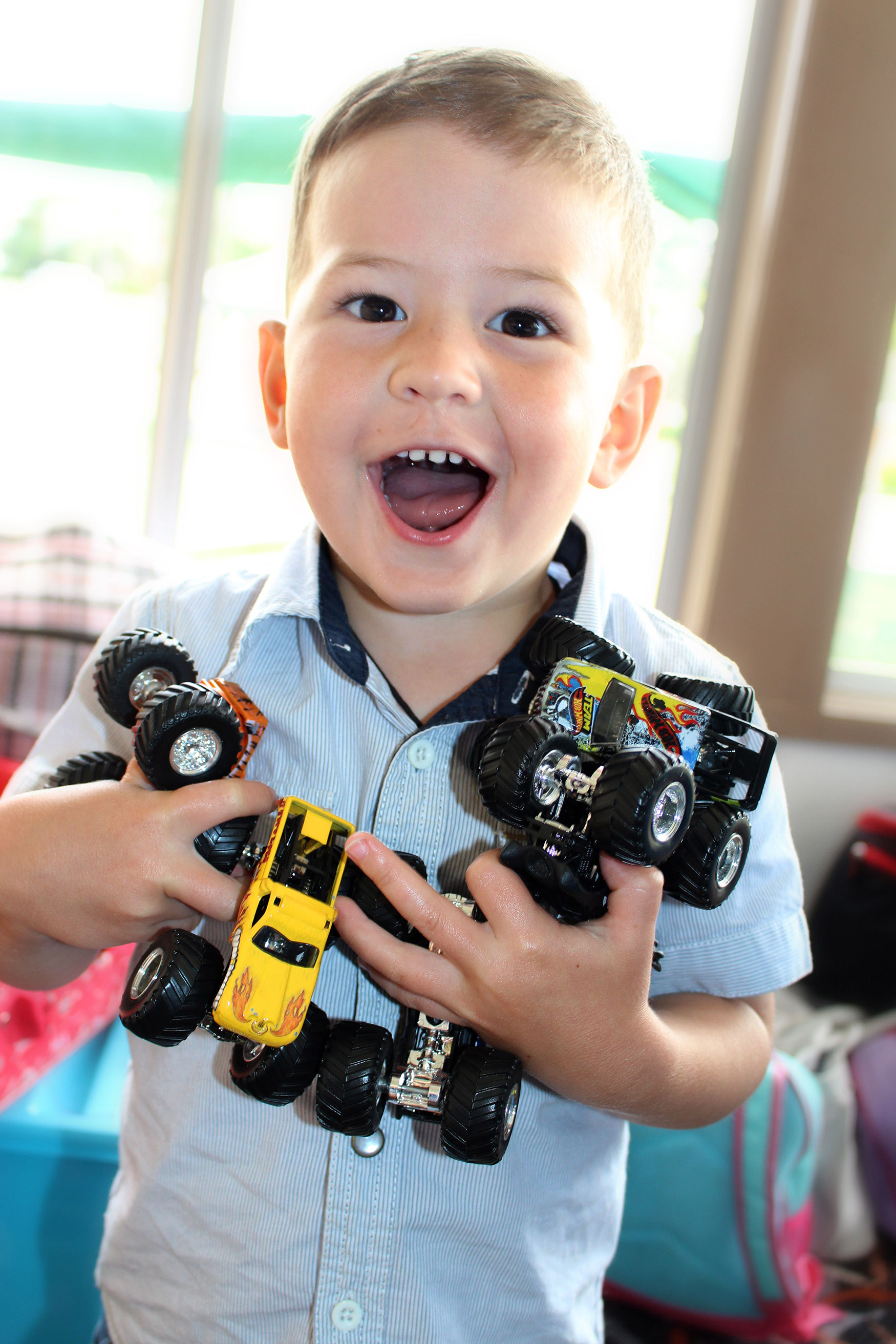
Once you are in the habit of getting down to your child’s level and are following their lead you can try some communication temptations to elicit communication. You can do this by:
You can pause during a familiar activity. Pausing and then waiting can create silences for your child to fill. When you and your child are doing something that can be repeated over and over again (e.g. playing tickle, singing, swinging on swing set), pause the activity from time to time. Then your child can ask you to continue.
Show and name two choices and wait for your child to choose one. Offering a non-preferred item and preferred item will make your child's choice easy to interpret. Allow your child time to respond. If he/she reaches or points to an item, make sure you label the item again before you give it to them. For example, hold up two choices and say the name of each e.g. Do you want “apple” or “carrot"?... WAIT for response. Then repeat the choice and WAIT again. A response may include verbal communication (e.g. words, sounds) or nonverbal communication (e.g. eye contact, gesture).
Place a preferred or exciting object that your child likes out of reach or in a clear box that they can’t open. Wait until he or she does something to ask for it. When he/she does, give him/her the object straight away.
Similarly, if your child needs help with something, wait until he/she indicates this to you via eye gaze, making a sound or handing the object to you. Then provide the language model. For example, if your child tries to open a drawer that is stuck, wait a few seconds and then say “open?". Wait for your child to copy. If they do copy, then expand this further by saying ‘open the drawer’.
Children love bubbles, balloons, wind-up toys and musical toys. These types of toys encourage children to take the lead in interaction as the child will need to get help from a communication partner to make the toys work. Instead of helping straight away, wait for your child to ask.
Instead of giving your child a big piece of banana or a full cup of water, give them a little bit then wait for them to ask for more. As soon as they do, give them a little bit more. Repeat the routine. This creates a need for your child to communicate.
Let your child find a surprise to create an opportunity to tell you about it.
Every day, little things go wrong. Spoons fall on the floor, crayons break, and drinks get spilled. Instead of fixing these little problems right away, wait a few seconds to see what your child will do or say.
Introduce activities that need more than one tool (e.g. painting). Give your child the paintbrush and paper, but no paint. Your child will need to ask for the paint or indicate in some way that the paint is missing. Make use of many activities which occur during the day, for example brushing teeth (hide the toothpaste), eating meals (hide the fork), or in the bath (hide the plug). For this to be successful, it is necessary that the child is familiar with the task before you take away one of the parts.
Introduce new toys and activities and look for the items that are most reinforcing and interesting to the child. New situations create a reason to communicate. Sometimes you can do something silly or unexpected in a routine situation (e.g. brush your child’s hair with a spoon) and see what reaction you get. This will give your child a reason to help out his/her 'silly parent'.
Instead of pausing, you could change the activity or leave out a step. Doing something differently creates an opportunity for your child to make a comment or communicate in some way.
Let's watch...
A fun activity that the child needs help with - The parent was holding up the bubbles and waiting for the child to indicate that he wanted his mother to blow the bubbles.
By making sounds and words to indicate that he wanted to blow bubbles
The child didn’t make any sounds or use any words
Let's break it down...
Caregiver Self-reflection
At home:
- What is one communication temptation that you could use with your child?
- What could you do to create opportunities for your child to communicate?




